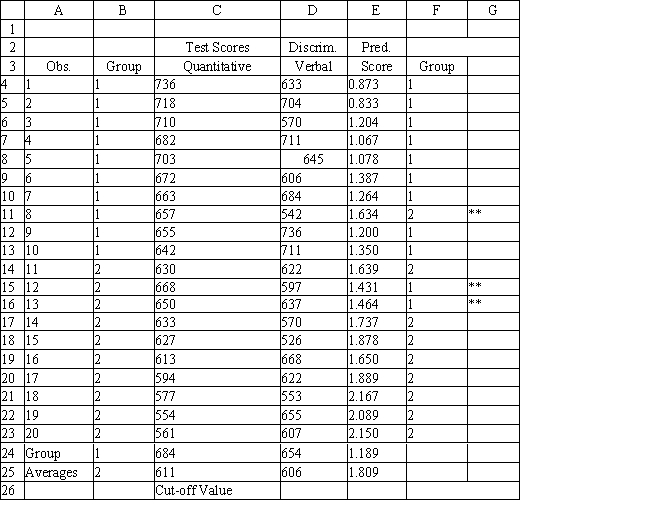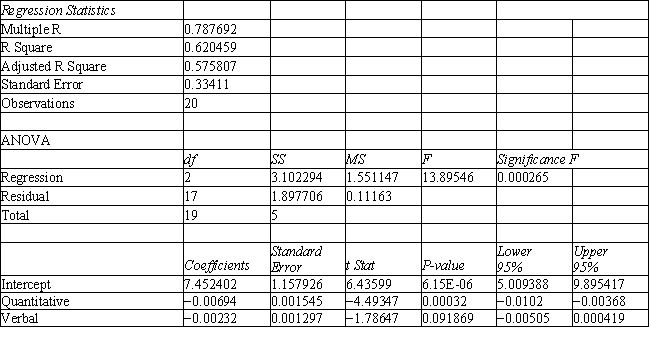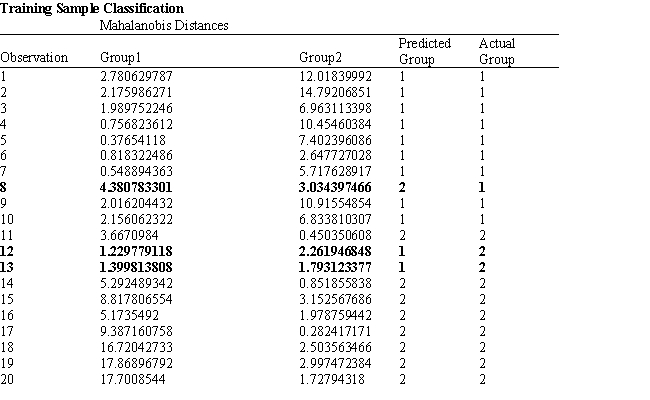Exhibit 10.1
The following questions are based on the problem description and the output below.
A college admissions officer wants to evaluate graduate school applicants based on their GMAT scores, verbal and quantitative. Students are classified as either successful or not-successful in their graduate studies. The officer has data on 20 current students, ten of whom are doing very well (Group 1) and ten who are not (Group 2) . 




-Refer to Exhibit 10.1. What is the verbal test score value of the group centroid for group 1?
Definitions:
General Journal
A primary accounting record used for recording all types of financial transactions, providing a chronological record of all business activities.
Personal Withdrawal
It refers to the money taken out of a business by its owner(s) for personal use, often considered as a draw against the owner's equity.
Post. Ref.
An abbreviation for "posting reference," used in accounting ledgers to indicate the connection or correlation between journal entries and the accounts they affect.
Revenue Journal
A specialized journal used to record the sales of services or goods on credit.
Q1: The number of constraints in network flow
Q2: If a company selects either of Project
Q6: A graphical representation of clustering outcomes showing
Q12: The optimal solution to a LP problem
Q13: In the _ step of data mining,
Q15: Refer to Exhibit 10.2. What percentage of
Q25: The supply nodes in the graphical representation
Q37: Refer to Exhibit 6.1. What values would
Q48: A trucking company wants to find the
Q85: Refer to Exhibit 11.21. The store wishes